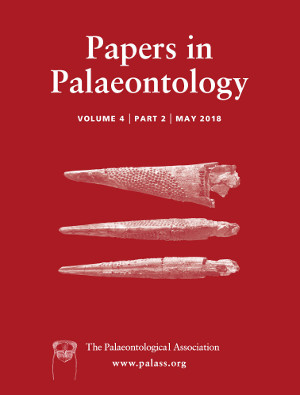Reg. Charity No. 1168330

Two partial reptile skulls and six dentigerous fragments from the lower Permian Richards Spur locality of Oklahoma represent a new genus and species of small captorhinid reptile. Labidosauriscus richardi gen. et sp. nov. is distinguished from other captorhinids in the reduction of the height of the ridges forming the characteristic net‐like, ridge‐and‐pit cranial sculpturing of captorhinids, and the superimposition of a system of finer pits and furrows over the primary ridge‐and‐pit cranial ornamentation. Labidosauriscus richardi shares with C. laticeps a post‐caniniform tooth morphology characterized by convex mesial and distal carinae that form a distinctly asymmetrical apex in labial aspect. The description of L. richardi brings to six the number of captorhinid species known from the productive Richards Spur fissure‐fill locality. Each of these species exhibits a distinctive post‐caniniform tooth morphology (or multiplication of these teeth), which is consonant with the hypothesis of resource partitioning among the small faunivorous and omnivorous captorhinids at Richards Spur. As an ‘exhumed early Permian hill’, Richards Spur provides a unique window into early reptile diversification in a distinctive upland environment that is rarely preserved in the tetrapod fossil record.